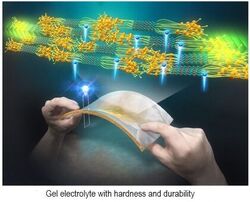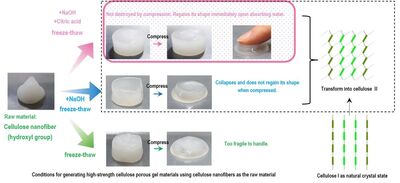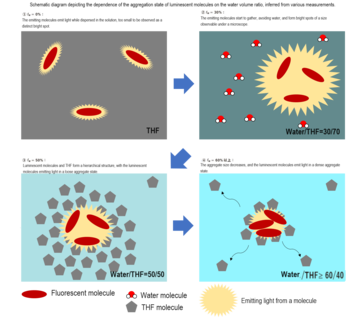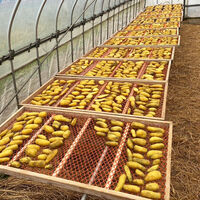J-PARC News January 2024 (Issue #225)
■Message from Director of J-PARC Center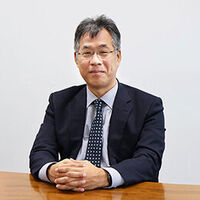
I would like to extend New Year's greetings to everyone.
I sincerely pray for the repose of the souls of those who lost their lives in the Noto Peninsula earthquake while offering heartfelt condolences to all those affected by this calamity. My earnest wish is for the swift restoration and reconstruction of the affected areas.
Last year, the restrictions on activities were lifted due to the reclassification of COVID-19 to Class 5. At J-PARC, we were able to advance research activities. The RCS has been supplying beams to MLF at an exceptionally high operational efficiency of over 95%, reaching 840 kW. This has led to various successful outcomes in experiments conducted at the MLF. Additionally, through long-standing upgrades, the MR achieved a significant increase in beam intensity sent to the Neutrino Experimental Facility, elevating it from 510 kW to 710 kW.
Meanwhile, in April and June, fires broke out at facilities subject to KEK’s control. Fortunately, these incidents did not result in any personal injuries. Nevertheless, I would like to extend my apologies to the local community and everyone affected for causing concern and inconvenience. I would like to offer my sincere apologies once again.
The mission of J-PARC is to advance research across a wide spectrum of fields, encompassing particle and atomic nucleus physics, as well as materials and life science. Our goal is to explore the mysteries surrounding the origins and diversity of the universe, matter, and life, thereby contributing to the improvement of the global Quality of Life. Upholding safety management as the foremost and crucial foundation for our endeavors, we are committed to continuously enhancing it. The progress of J-PARC relies on the understanding and collaboration of our local community, users worldwide, and all those involved with us. I would like to express my anticipation of your ongoing support and partnership this year.
January 2024
Takashi Kobayashi, Director, J-PARC Center
■Tough and Stiff Gel Polymer Electrolyte: Expectation for Enhancing Durability of Flexible Energy Storage Devices (November 25th)
A collaborative research group featuring Tokyo University, JAEA, J-PARC, KEK, and the Japan Science and Technology Agency has succeeded in developing a tough and stiff gel polymer electrolyte for energy storage devices showing world-class stiffness and modulus of elasticity, combining phase separation phenomena and strain-induced crystallization of polymers.
Recently gel polymer electrolytes have been on the spot of light as a material of electrolyte for the next generation "bendable" flexible energy storage devices attachable to clothing and human skin due to their flexibility and safety derived from polymer. The two traits are essential for such a material; stiffness to prevent battery short circuits by the growth of metallic crystallization along with charging and discharging and toughness to prevent improvement of cracks by repeatedly bending. However, conventional materials have been considered challenging to meet these traits concurrently.
This study realized enough stiffness to prevent the growth of metallic crystallization by forming a microlayer separation structure inside the material. Moreover, stiffening polymer chains with crystallization under large loads from bending and stretching enabled the world-highest toughness in solid, semisolid, organic-inorganic complex gel electrolytes.
This autonomously curable gel polymer electrolyte is expected to be applied as the electrolyte of flexible energy storage devices, owing to its high safety and durability. Furthermore, its versatility extends to the design of electrolytes for various flexible electrochemical devices, including sensors, owing to the ability to substitute solutions with superior ion conductivity, such as ionic liquids.
For further details, kindly refer to our official website. https://j-parc.jp/c/press-release/2023/11/25001245.html (only in Japanese)
■Development of Strong Functional Materials Gel via Simply Freezing Natural Cellulose
-Finding Method of Freeze-Induced Crystalline Transformation and Simple Gel Synthesis (December 1st)
A collaborative research team comprising JAEA, Toyohashi University of Technology, Tokyo Metropolitan Industrial Technology Research Institute, and Meiji University found the crystalline transformation within a microscopic structure of the frozen aqueous solution. Moreover, the team realized making high-strength cellulose porous gel materials by a simple procedure.
In recent years, developing materials using cellulose, a renewable raw material, has attracted attention. However, improving toughness and formability was challenging. Structural control of cellulose molecules is key to creating new cellulose-derived materials to realize toughness. The research team used cellulose nanofiber extracted from wood pulp and focused on a microscopic concentration layer around ice crystals formed by the solutes and bound water inside the frozen aqueous solution of cellulose. The team found the addition of sodium hydroxide and citric acid induced a chemical reaction among cellulose molecules within the frozen concentration layer, resulting in compressive recoverability and macroporous nanocellulose hydrogels with a strong three-dimensional network structure.
The macroporous nanocellulose hydrogels developed in this research have properties, including a macroporosity exceeding 95%, high compressive strength, high formability, environmentally friendliness, high biocompatibility, and biodegradability. This material is expected to be applied such as the adsorption of harmful substances, medical materials, and carbon dioxide absorbers.
For further details, kindly refer to our official website. https://j-parc.jp/c/press-release/2023/12/01001247.html (only in Japanese)
■Gathering Molecules! - Exploring the Aggregation Dynamics of Hydrophobic Molecules in Aqueous Solution (December 14th)
A collaborative research group involving researchers from Kanagawa University, Osaka University, Tokyo University of Science, KEK, and JAEA has yielded a noteworthy revelation: the ratio between water and tetrahydrofuran (THF) elicit changes in the aggregation size and luminescence of molecular assemblies.
An organic compound, THF, exhibits a tendency to mix with water to a specific extent at ambient temperature. In the mixture of water and THF, hydrophobic molecules aggregate, and their forms change with properties of mixed solution depending on the water-THF ratio. However, the details of the aggregation change and the effects on physical and chemical properties have not been well understood.
In pursuit of a more comprehensive understanding, the research group has observed that water and THF molecules form varieties of micro-mesoscopic scale structures, where hydrophobic molecules are distributed to form aggregation. They have also elucidated that the aggregation state of the solute and the size of the aggregate accordingly change upon changing the mixing ratio of water and THF, which significantly affects the fluorescence properties of the solution.
If the judicious control of hydrophobic molecular aggregation is possible based on the insights from this research, such mastery could contribute to numerous applications, spanning from the optimization of devices such as organic displays and lasers to effective internal medicine delivery technology development.
For further details, kindly refer to our official website. https://j-parc.jp/c/press-release/2023/12/14001258.html
■J-PARC Hello Science "Various Imaging with Muons" (December 22nd)
In December's Hello Science, Dr. SHIMOMURA Koichiro of the Materials and Life Science Division introduced imaging technology using muons, elementary particles originating from cosmic rays in the universe. Muons are utilized for "imaging," penetrating objects, and revealing their interior without causing damage. They have contributed to significant findings, such as assessing the potential for volcanic eruptions and discovering unknown spaces inside Egyptian pyramids.
The team from the board of education in Tokai Village, the J-PARC center, and other organizations launched a project to investigate the ancient tomb in Tokai Village using this technique this fiscal year. Researchers from diverse fields, spanning both scientific and liberal arts disciplines, including physics and archaeology, collaborate with local students to deepen their knowledge about ancient tombs and muons, aiming to unveil their mysteries. Currently, students are actively involved in constructing the muon detector, with plans to start observing inside the ancient tomb in the next fiscal year. The details of the project's activities are available on J-PARC's official website noted following.
Many attendees participated in this month's "Hello Science" and exchanged lively questions and answers, indicating a strong interest and anticipation for muons. Please pay attention to developments related to muons. For more information, please visit the official J-PARC website. https://j-parc.jp/c/topics/ (only in Japanese)
■Lesson at Okubo Elementary School in Hitachi City (December 18th)
The off-site lesson was themed "Exploring the Unseen Vacuum," featuring Dr. KAMIYA Junichiro from the Accelerator Division. This initiative is part of a program organized by the Hitachi Civic Center for elementary schools in Hitachi City.
■Lesson at Tokai Minami Junior High School (December 22nd)
The off-site lesson, themed "The Useful Elementary Particle: Muon," was conducted by Dr. TAKESHITA Soshi from the Muon Section. A total of 178 first-year junior high students participated in the event, expressing their interest and curiosity with feedback such as "I'm intrigued by muons!" and "I'd like to delve into muons research."
■J-PARC Sanpomichi ㊷ Winter Delicacy in Tokai Village
![]() Winter in Tokai Village marks not only the world's largest production of neutrinos, with shooting a significant number of neutrinos at the J-PARC in Tokai Village toward Super Kamiokande in Gifu prefecture but also another notable product in the region: dried sweet potatoes. The ratio of products accounts for more than 90% of the total production in Japan, including adjacent areas’ production amounts such as Hitachinaka City and Naka City.
Winter in Tokai Village marks not only the world's largest production of neutrinos, with shooting a significant number of neutrinos at the J-PARC in Tokai Village toward Super Kamiokande in Gifu prefecture but also another notable product in the region: dried sweet potatoes. The ratio of products accounts for more than 90% of the total production in Japan, including adjacent areas’ production amounts such as Hitachinaka City and Naka City.
The productive attributes in this area, including drainable red soil with volcano ash, ocean winds with minerals, and a climate with a relatively small amount of rainfall, make it ideal for producing dried sweet potatoes. The process is remarkably simple: steam, peel, cut, and dry, leaving no room for shortcuts. At the beginning of spring, farmers dig up the seed potatoes preserved in the soil from the previous year, create beds for seedlings, plant the seedlings in May, harvest in October, start making dried sweet potatoes in December, and finally ship products at peak now.
Some families of J-PARC staff members engage in producing dried sweet potatoes. While dried sweet potatoes are generally perceived as expensive, locals can enjoy scarce non-uniform ones, "Sekkou", for affordable prices.
Tokai Village is renowned for its world-leading experimental facilities as well as for its thriving agriculture. In the coldest time of the year, locals savor this modest winter delicacy, as it spreads natural sweetness upon biting, bringing warmth to both body and soul.

